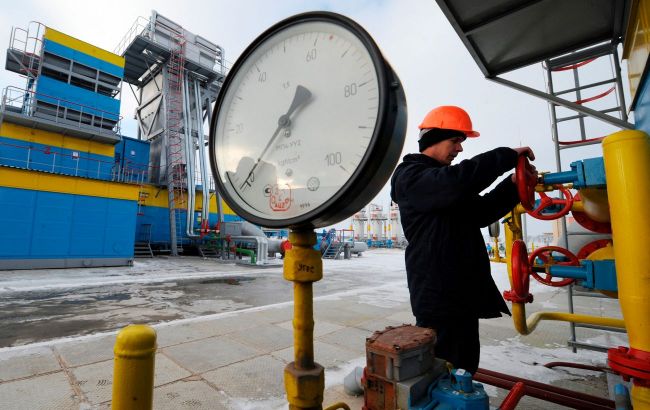European traders avoid Ukrainian gas storage facilities after Russian strikes
 Illustrative photo (Getty Images)
Illustrative photo (Getty Images)
This summer, European traders are taking advantage of only a small portion of the vast storage opportunities for natural gas in Ukraine, following Russian attacks that have heightened risks and deprived the war-torn country of much-needed income, citing the Financial Times.
Ukraine possesses the largest underground storage facilities in Europe and last year provided EU companies with valuable space to store excess gas ahead of winter.
However, after Russian strikes in the spring targeted Ukraine's energy infrastructure, including gas storage pumping stations, European volumes in June and July dropped to just one-tenth of the volumes stored during the same period last year.
"Persistent Russian attacks on Ukrainian storage facilities increase the risk of storing gas," said Marco Saalfrank, head of Continental Europe Trading at the energy group Axpo.
Declining volumes
EU gas storage facilities can hold no more than 100 billion cubic meters of natural gas, while the bloc’s annual demand ranges from 350 to 500 billion cubic meters, depending on weather and other conditions. Last year, Ukraine offered about 10 billion cubic meters of additional storage capacity, and European companies injected over 2 billion cubic meters ahead of the winter months, as the country offered incentives like low storage tariffs. However, this year, injections have been minimal, even though EU storage is 86% full—the highest level this year, according to Gas Infrastructure Europe.
According to Argus, in June and July, European companies sent only 15.4 million cubic meters and 51.9 million cubic meters compared to 102.7 million cubic meters and 586.6 million cubic meters in the same months last year.

www.ft.com
Ukrainian storage facilities
Although the gas reservoirs themselves are located deep underground, which protects them from strikes, damage to above-ground facilities used to pump gas in or out of storage poses a significant risk that concerns traders. "The main problem is not the loss of gas but the inability to extract it when needed and in demand," said Saalfrank of Axpo.
The state energy company Naftogaz stated that "several attacks" occurred on the above-ground infrastructure in March and April, and repair work was carried out. "No issues, we are operating as usual" with regards to injection and withdrawal of gas, said Oleksii Chernyshov, head of Naftogaz.
Storage income
Ukraine is interested in European traders continuing to use its gas infrastructure, partly because it provides valuable revenue to its war-torn economy. However, if no additional incentives are introduced for gas storage in Ukraine, it is difficult to see how European traders will return, said Natasha Fielding, head of European gas pricing at Argus.
Last year, the EU negotiated with banks to provide insurance to cover risks, but these talks have since fizzled out. A senior EU official said that the increased frequency of attacks has made it more difficult to consider such issues. Ukraine could earn around €200 million from European traders storing gas, but the counter-guarantee would need to reach €1 billion, the official said. "If you want to support Ukraine, just give them €1 billion," the official said.
Last year’s favorable price differential has almost disappeared. Gas accumulation in Ukraine’s storage facilities accelerates during the summer months when gas prices are lower compared to other seasons. Traders then sell it when prices rise to make a profit, typically in the winter months when heating demand drives up natural gas demand.
According to the price agency Argus, last year the differential often exceeded €20 per megawatt-hour in the summer, but this year it has only been about €5/MWh. Saalfrank of Axpo said that the price differential is not attractive enough to justify the risk of injecting gas into a war zone.
Ukraine’s underground gas storage facilities are the largest in Europe, located at depths ranging from 400 meters to 2 kilometers, making gas storage completely safe.
Last year, foreign traders and energy companies stored 2.5 billion cubic meters of gas in Ukraine's storage facilities. This year, the Naftogaz group aimed to increase this volume to 4 billion cubic meters.

